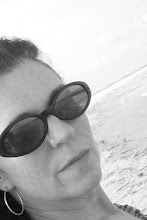
Poems may seem simple or difficult upon first reading. Unpacking the meaning of poem takes more than one reading and a careful focus on each part of the poem.
First, what is poetry? Poetry, if it does not follow a specific formula, can be difficult to define.
Most contemporary poetry is free verse: poetry without "regular meter, rhyme, or stanzaic forms" (http://www.yourdictionary.com/free-verse) . Most of the poems we will study are free verse poems. Modern free verse poems, like all types of poetry, rely on the following characteristics:
- Word usage is concise or economical;
- Each word may have several different associations, meanings, or allude to something outside the poem's context;
- While rhyme and rhythm may not follow specific rules, sound is still an important part;
- Poetry can even have a special arrangement on the page that supports its theme.
Step 1
Read the poem once, preferably aloud.
Step 2
Read the poem a second time ( or more), annotating the poem and taking notes on the following seven areas:
- Title--What information does it tell you? How is it significant to the subject and/or theme?
- Speaker--Is it the author or a character in a narrative?
- Setting--Is there a discernible physical setting? More than one place? What time period does the poem's narrative take place? Are there shifts in time?
- Situation--What is it? What is going on in the poem?
- Characters & Audience--are there other characters in the poem? Does the poet address them? If so, who is the audience?
- Are there significant universal or contextual symbols? Other poetic devices?
- Theme (usually found developed throughout the poem or near/at the end)--Does the title have new meaning at the end, considering the theme?
When discussing literature, you should use the language and terms that best suit analysis. We will be building a master list of literary terms. Below is a list of our first relevant terms discussed in class:
- literal versus figurative language
- metaphor
- simile
- ballad/narrative
- refrain
- stanza
- persona
- allusion
- imagery--sight and sound


No comments:
Post a Comment